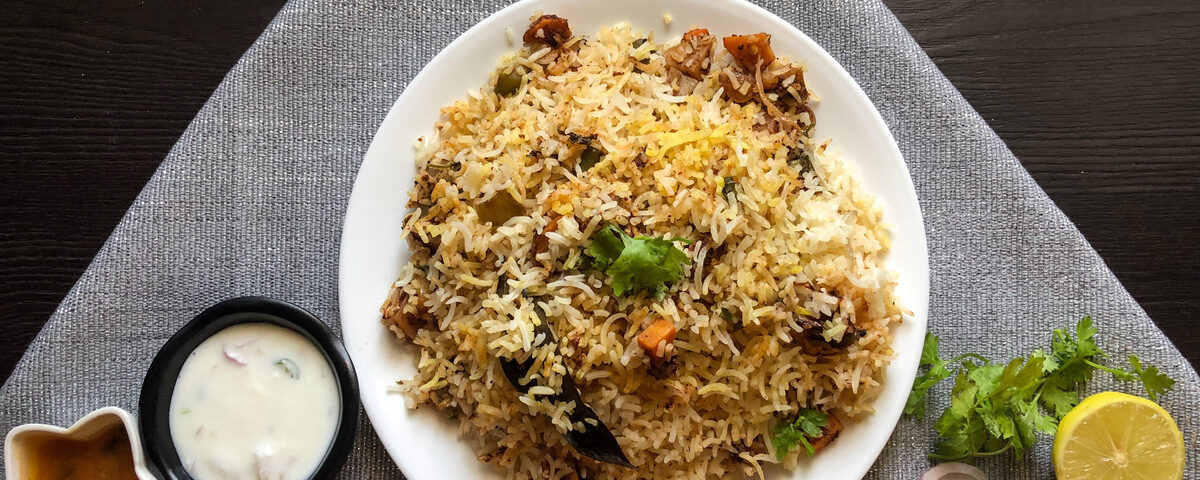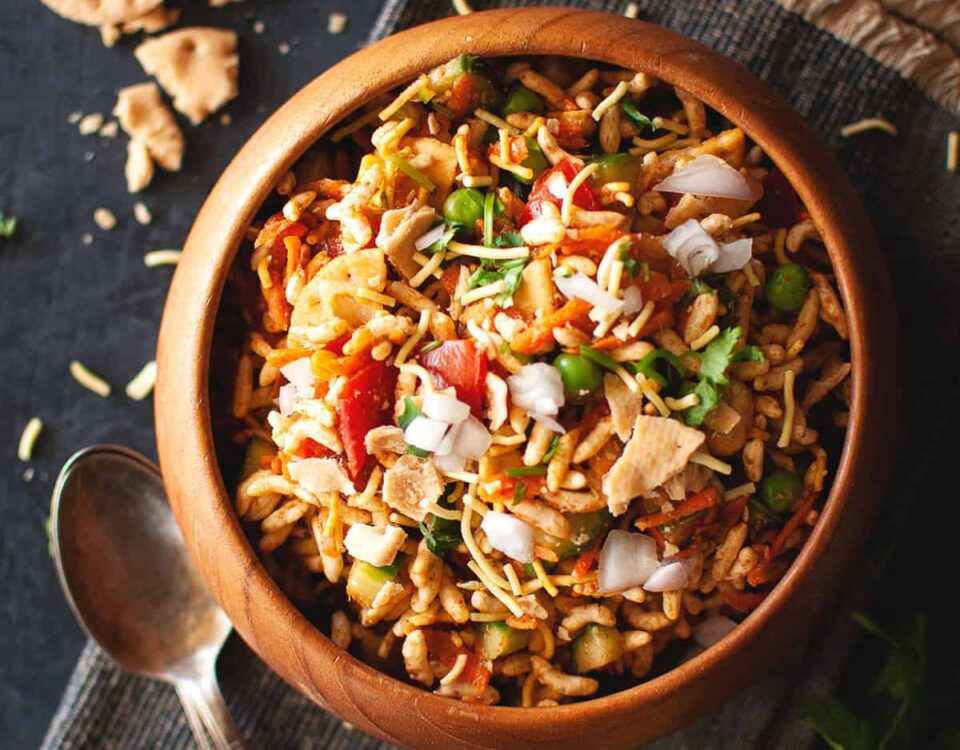
Chicken Curry: A Delicious and Flavorful Journey

Samosa: A Delectable Culinary Experience
The Ultimate Guide to Biryani: Origin, Varieties, and Recipe
Biryani, often described as a dish fit for kings, is more than just a meal; it’s an experience infused with history, culture, and tradition. This aromatic rice dish, known for its flavorful blend of spices, basmati rice, and tender meat or vegetables, is a staple in South Asian cuisine. In this guide, we delve into everything you need to know about Biryani — its origins, popular varieties, and a step-by-step recipe to make an unforgettable Biryani at home.

The Origin and Evolution of Biryani
The word “Biryani” is derived from the Persian word “birian,” meaning ‘fried before cooking,’ and “birinj,” the Persian word for rice. The origins of Biryani can be traced back to the time of Mughal rule in India. It is believed that the dish was brought to the Indian subcontinent by Persian travelers and merchants. Over centuries, Biryani has evolved, blending with local cooking practices and ingredients to form unique regional versions.
Biryani was initially a royal dish served in the Mughal courts and later became popular among the masses. The Mughal influence on Biryani is evident in its rich use of spices and cooking techniques. As the Mughal Empire expanded, the dish was introduced to various parts of India, leading to the development of different styles of Biryani, each with its unique flavor, ingredients, and cooking method.
Popular Varieties of Biryani
Hyderabadi Biryani
Hyderabadi Biryani is perhaps the most famous and loved Biryani variety. It originates from the kitchens of the Nizams of Hyderabad. This style of Biryani is known for its layers of marinated meat and rice with a generous amount of saffron, aromatic spices, and fried onions. There are two types of Hyderabadi Biryani: Kachchi (raw) Biryani, where raw marinated meat is cooked with rice, and Pakki (cooked) Biryani, where cooked meat is layered with rice.
Lucknowi Biryani
Also known as Awadhi Biryani, this variety hails from Lucknow in the northern part of India. Influenced by Persian cooking techniques, Lucknowi Biryani is known for its milder flavor and the use of fragrant rice. The meat and rice are cooked separately and then combined in a method called ‘Dum’ cooking, where the dish is slow-cooked in a sealed container to retain all the flavors and aroma.
Kolkata Biryani
Kolkata Biryani is a unique adaptation introduced by the exiled Nawab of Awadh, Wajid Ali Shah, in the 19th century. One distinguishing feature is the use of potatoes, which are cooked along with the meat and rice. The addition of boiled eggs is also common. Kolkata Biryani is less spicy and uses fewer spices compared to its counterparts, allowing the fragrance of rice and the flavors of meat, potatoes, and eggs to shine through.
Malabar Biryani
Malabar Biryani is a favorite in the Malabar region of Kerala in southern India. This variety is known for its use of local spices, coconut, and the shorter grain rice variety called Kaima or Jeerakasala. The dish is often cooked with ghee and garnished with fried onions, cashews, and raisins, adding a unique sweet and savory flavor.
Sindhi Biryani
Sindhi Biryani, native to the Sindh region (now part of Pakistan), is renowned for its spice level and piquant taste. It often includes yogurt, tomatoes, and green chilies in its preparation. This variety is characterized by a rich combination of spicy flavors, and it’s usually served with side dishes like raita or salad.
Essential Ingredients for Making Biryani
While each variety of Biryani has its unique set of ingredients, some essentials are common across all types:
- Basmati Rice: Long-grain Basmati rice is preferred for its fragrant aroma and ability to remain separate and fluffy after cooking.
- Meat or Vegetables: Chicken, mutton, beef, or vegetables like potatoes and carrots.
- Spices: A combination of whole and ground spices such as cumin, coriander, cloves, cardamom, cinnamon, bay leaves, star anise, and saffron.
- Aromatics: Onions, garlic, and ginger.
- Yogurt: Used in marination to tenderize the meat and enhance flavor.
- Ghee or Oil: Adds richness and depth to the dish.
- Herbs: Fresh cilantro and mint for garnish.
Step-by-Step Biryani Recipe
Ingredients
The Rice
- 2 cups basmati rice
- 4 cups water
- 1 bay leaf
- 4 green cardamom pods
- 4 cloves
- 1 cinnamon stick
- Salt to taste
The Marinade
- 1 lb (500g) chicken or mutton pieces
- 1 cup yogurt
- 1 tablespoon ginger-garlic paste
- 1 teaspoon turmeric powder
- 1 teaspoon red chili powder
- 1 teaspoon garam masala powder
- Salt to taste
The Biryani
- 2 medium onions, thinly sliced
- 2 tomatoes, chopped
- 2 green chilies, slit
- 1 cup chopped fresh cilantro
- 1 cup chopped fresh mint
- 1/2 cup ghee or oil
- Saffron strands soaked in 2 tablespoons warm milk
- 2 boiled eggs (optional)
- Fried onions for garnish
Instructions
- Prepare the Rice
- Rinse the basmati rice under cold water until the water runs clear.
- In a large pot, bring 4 cups of water to a boil. Add the bay leaf, green cardamom pods, cloves, cinnamon stick, and salt.
- Add the rinsed rice and cook until it is 70% done (the rice should still have a bite to it).
- Drain the rice and set aside.
- Marinate the Meat
- In a bowl, mix yogurt, ginger-garlic paste, turmeric powder, red chili powder, garam masala, and salt.
- Add the chicken or mutton pieces and coat them evenly with the marinade.
- Cover the bowl and let it marinate in the refrigerator for at least 1 hour, preferably overnight.
- Cook the Meat
- Heat ghee or oil in a large, heavy-bottomed pot over medium heat.
- Add the sliced onions and cook until golden brown. Remove half of the fried onions for garnish.
- Add the marinated meat to the pot and cook until the meat is browned and cooked through.
- Add chopped tomatoes, green chilies, chopped cilantro, and mint. Cook for another 5-10 minutes until the tomatoes are soft and oil starts to separate from the mixture.
- Assemble the Biryani
- Preheat the oven to 350°F (175°C) if you’re using an oven for ‘Dum’ cooking, or prepare a heavy-bottomed skillet for stovetop Dum cooking.
- In a large heavy-bottomed pot or Dutch oven, layer half of the partially cooked rice.
- Top with the cooked meat mixture.
- Add the remaining rice on top of the meat layer.
- Drizzle the saffron milk over the rice.
- Garnish with fried onions, chopped cilantro, and mint. Add the boiled eggs if using.
- Cover the pot with a tight-fitting lid or aluminum foil.
- Dum Cooking
- Oven Method: Place the covered pot in the preheated oven and cook for 30 minutes.
- Stovetop Method: Place the pot on a heavy-bottomed skillet and cook on low heat for 30 minutes.
- Serve
- Once done, gently fluff the rice with a fork, ensuring the layers remain intact.
- Serve hot with raita, salad, or a side of your choice.
Tips for the Perfect Biryani
- Marinate Longer: Marinating the meat longer enhances the flavor and tenderizes the meat.
- Use Quality Rice: Using high-quality Basmati rice makes a significant difference in texture and aroma.
- Layering: Proper layering of rice and meat ensures an even distribution of flavors.
- Dum Technique: The ‘Dum’ technique is crucial for trapping steam and mixing flavors without overcooking.
Conclusion
Biryani is a timeless dish that promises a burst of flavors and an aromatic experience. Whether you’re making Hyderabadi Biryani, Lucknowi Biryani, or any other variety, understanding the basics and incorporating essential tips can help you create a delicious, authentic Biryani at home. Enjoy your culinary journey through the rich history and flavors of Biryani.


